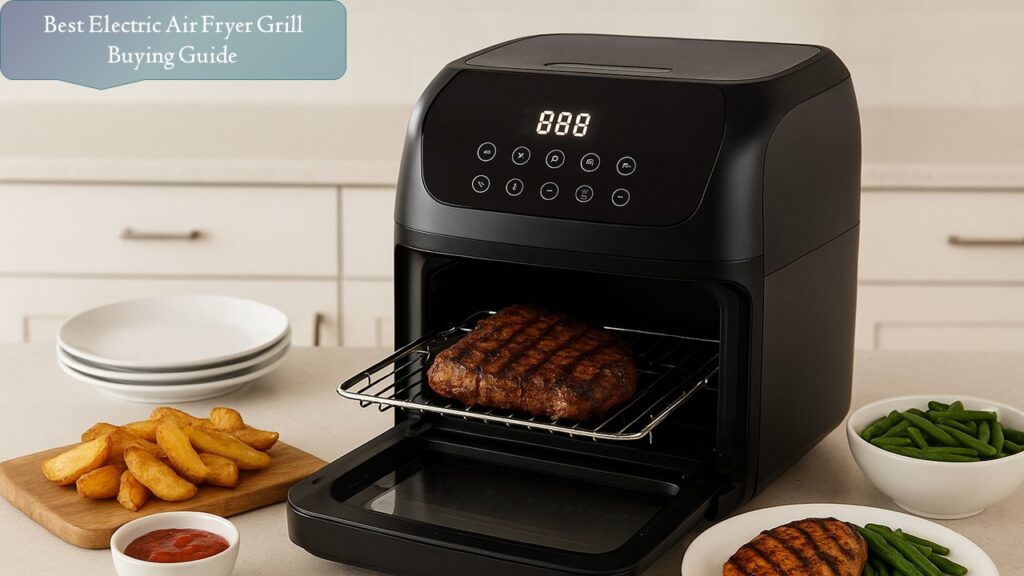Reheating leftovers is a daily task in most households, and the choice of appliance can make a significant difference in taste, texture, and even healthiness. With air fryers and microwaves being two of the most popular kitchen gadgets today, many wonder: which one truly does a better job at bringing yesterday’s meal back to life? The answer depends on several factors, including the type of food, cooking goals, and convenience. Let’s dive deeper to find out which appliance takes the lead.
Microwaves have long been the go-to option for quick reheating. Their speed and ease of use are unmatched, they can warm soups, pasta, or rice in mere minutes. Air fryers, on the other hand, have gained fame for their ability to recreate the crispiness of fried foods with minimal oil. This feature becomes particularly valuable when reheating pizza, chicken wings, or breaded dishes, which often turn soggy in a microwave.
How Microwaves Reheat Food?
Microwaves use electromagnetic waves to excite water molecules within the food. This vibration generates heat quickly, allowing meals to warm evenly and rapidly. One of the main benefits is efficiency: you can reheat a plate of leftovers in a fraction of the time it would take using an oven or stovetop.
Additionally, microwaves require no added fats, keeping calorie counts low. They’re ideal for soups, stews, pasta, and other moisture-rich dishes. However, they have limitations. Foods like pizza, fried chicken, or French fries often become soft or soggy, losing their original texture. Uneven heating is another common issue, requiring occasional stirring or rotation.
How Air Fryers Reheat Food?
Air fryers operate by circulating hot air around the food at high speeds. This method allows foods to regain their crispiness without needing much oil. For reheating pizza, chicken tenders, or any fried leftovers, air fryers excel because they restore the crunchy exterior that microwaves cannot.
Air fryers also offer versatility, allowing you to reheat, bake, roast, or even toast. While the reheating process might take slightly longer than a microwave, the texture and taste results often outweigh the extra minutes. Foods are less likely to turn soggy, and the air circulation ensures more even heating than simply placing leftovers on a plate in a microwave.
Nutritional and Health Considerations:
From a health perspective, both appliances have advantages. Microwaves retain more nutrients in vegetables and lean proteins because of the shorter cooking time. No extra oil is required, which reduces added calories.
Air fryers, while slightly less efficient in nutrient preservation for some dishes, shine when it comes to maintaining texture without additional fats. Reheating fried foods in an air fryer avoids adding more calories from oil, which is often necessary when pan-frying to restore crispiness.
Time and Convenience:
Microwaves are undeniably convenient. Their speed is perfect for single servings or when you’re in a hurry. Air fryers, while slightly slower, deliver superior texture, especially for foods where crispiness matters. Preheating is sometimes required, and cooking times may vary depending on food thickness, but the result is often more satisfying to the taste and texture.
Drawbacks of Each Appliance:
Microwaves can make foods rubbery, soggy, or unevenly heated. For dishes like fried chicken, pizza, or breaded fish, the texture often suffers. On the other hand, air fryers may not be ideal for reheating soups or stews, as their dry heat can alter moisture content. Air fryers also require more counter space and sometimes take longer to clean than microwaves.
When to Choose Microwave or Air Fryer?
Choosing between a microwave and an air fryer for reheating depends largely on the type of food:
- Microwave: Best for soups, rice, pasta, vegetables, and any dish where moisture retention is key. Ideal for quick, no-fuss reheating when speed is the priority.
- Air Fryer: Best for fried foods, pizza, breaded meats, or anything where maintaining crispiness is important. While slightly slower, it delivers better texture and taste.
Final Thoughts:
Both microwaves and air fryers have their place in modern kitchens. For speed and convenience, microwaves remain unparalleled, especially for moisture-rich dishes. For texture, crispiness, and reducing added oils, air fryers are the clear winner, particularly when reheating fried or baked foods.
A practical approach is to use both appliances depending on the food type. Reheat soups or rice in the microwave, and give fried or crispy foods a spin in the air fryer. This combination ensures your leftovers taste fresh, retain nutritional value, and maintain a satisfying texture.
Ultimately, neither appliance is universally “better”, each excels in different areas. Understanding their strengths allows you to make smarter decisions and enjoy your meals exactly how they were meant to be, even days after cooking.







